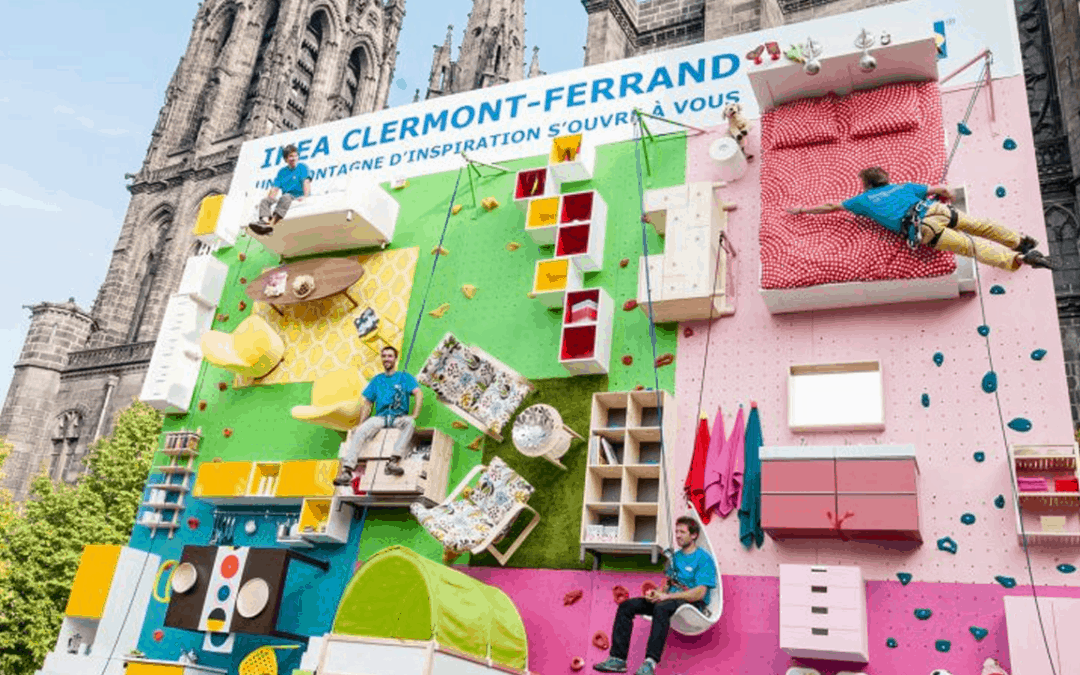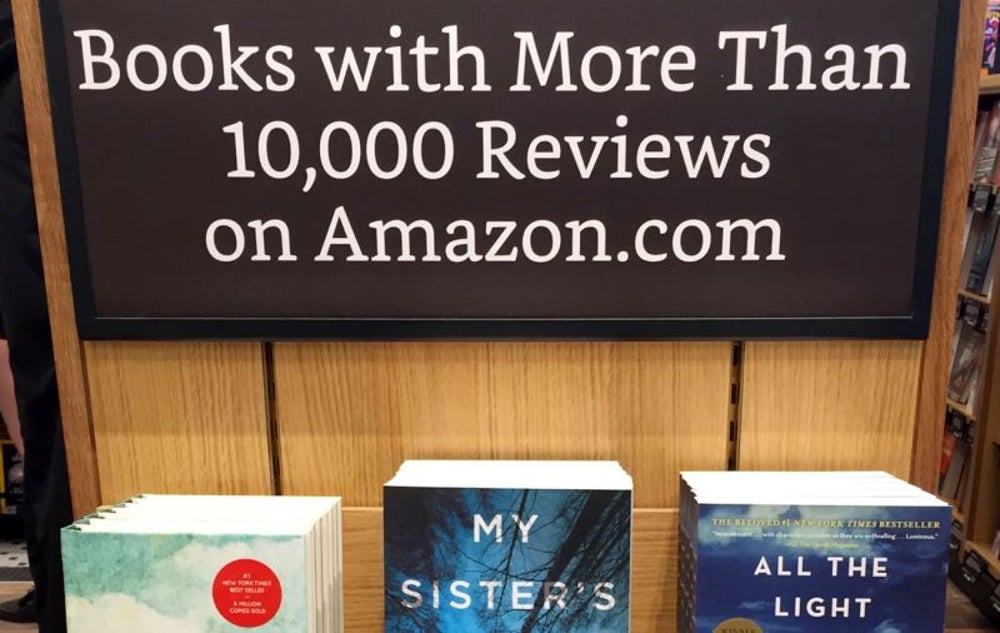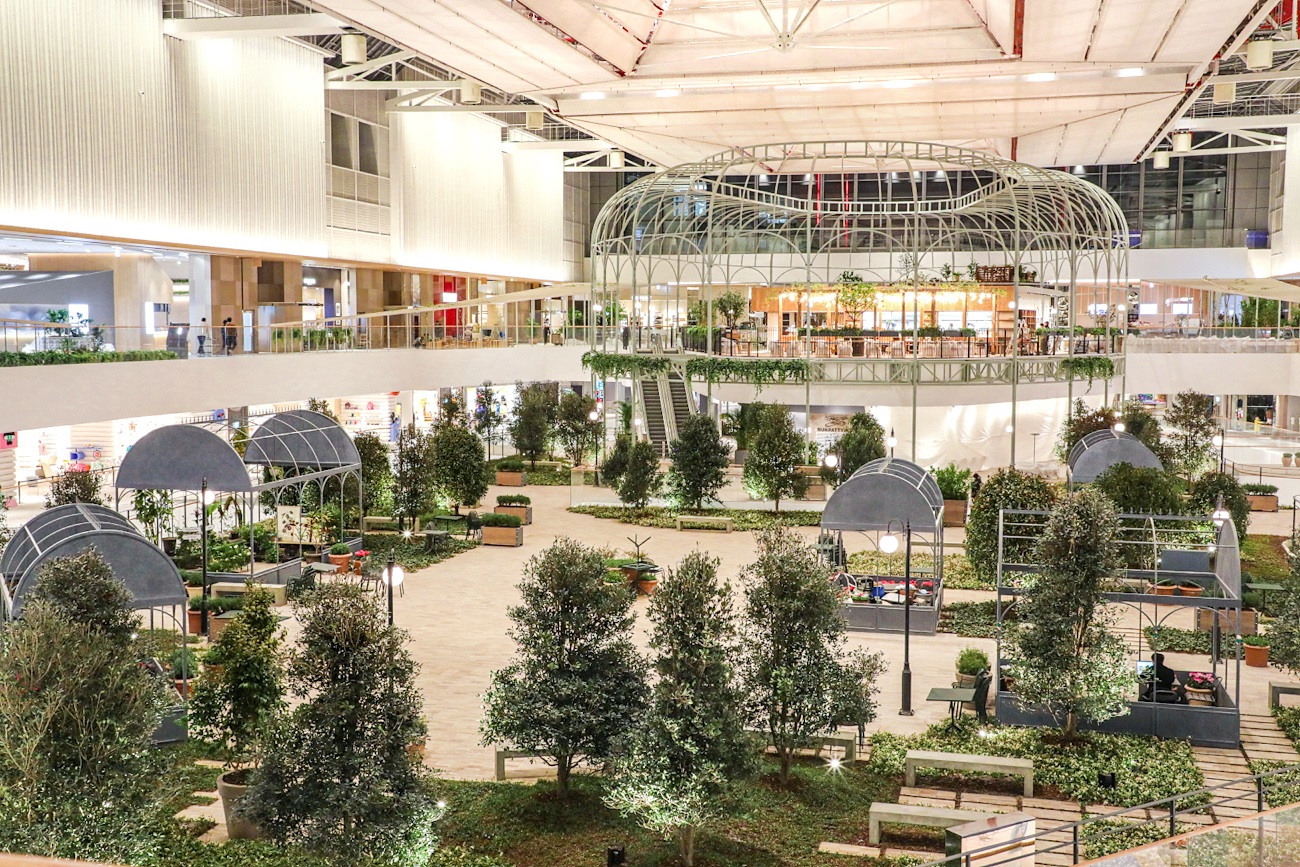Nowadays, consumers want to go around, experience things, touch them and play. They keep looking for experiences that they can be happy with and say, "I did this last week!" or places where they can share photos by posting them on their social media. For these reasons, even though Generation Z is familiar with online media and leaders of the market, offline spaces continue to be created, rather than disappearing. So, let's learn about experiential marketing drives these consumers.
What is experiential marketing?
 |
Experiential marketing, which is prevalent these days, is a marketing strategy that focuses on consumer experience. These days, in addition to the value of products being in focus, experience is valued as well and consumers do not hesitate to spend money for it. In other words, an economic era that values experience has emerged. Philip Kotler, a U.S. business scientist, emphasizes that the most influential factor in consumers’ final purchasing decisions is an experience in a shopping space. Companies generally imagine that consumers visit stores with plans to buy specific items. However, most consumers decide to buy things depending on the emotions and atmosphere of the site.
According to a 2017 survey by American pollster Harris, 78% of millennials chose to spend money on a cool experience instead of cool stuff. Companies are also responding to these social changes by expanding ‘experiential marketing’. According to a 2016 study done by the U.S. marketing magazine Event Track, 77% of marketing professionals utilize experiential marketing as the core of brand promotion strategies. Chanel, a French high-end luxury fashion brand, also offers a brand experience, leaving behind its existing "high-end" image and is targeting the 2030s.
For example, Chanel opened the arcade concept pop-up store 'Coco Game Center' in Hongdae in 2019 and hosted a game event. Chanel also displayed 80s-style game consoles such as Rhythm action game 'Sound', a driving game 'Beauty Ride', a claw machine game, a puzzle shooting game with traditional entertainment services like makeup and photo booths in the store. The store was full of entertainment to attracted young people and provide people with special memories. In this way, we can see Chanel’s efforts to imprint the brand image on the long-term memory of the 2030s generation. Moreover, the 2030s generation, the main consumer of our society, want an ‘experience’ even when they buy a small thing. They have a pattern of ‘pre-experience and post-purchase experience that they search for in reviews even if they only go to a restaurant. However, the information provided on the online shopping malls often does not always tell consumers what they want to know.
 |
There is a lot of background behind what made this marketing method popular. Let’s find out the background reasons for the experiential marketing trend. The first reason for the experiential marketing trend can be found in technological advancement. In the past, when technological differences were relatively severe, it was possible to get a response from consumers just by presenting quality as the most important advantage of products.
However, as the quality of the products is now higher than before, it became difficult to attract consumers with just an improvement in product quality alone. In this situation, another distinct strategy was needed. So experiential marketing became popular. The second reason is an increase in national income. Thomas Frey, the head of the Da Vinci Institute and futurist in the U.S., said, "In the era of national income of $20,000, food, clothing, and shelter-related consumption increases dramatically, while people intend to invest more on experience when income levels are over $30,000.”
In Korea, as per capita income rose to 30,000 dollars in 2018, the pattern of consumption tailored to survival, changed to a pattern to the improvement of quality of life. This resulted in a paradigm shift from a commodity economy to an experience economy. The third cause of this change is the spread of social media. Currently, social media serves as an 'experience exhibition hall'. With the spread of social media, people started to enjoy bragging about special experiences. Having a memorable experience and sharing this through social media has become valuable among people.
In this way, experiential marketing has naturally become popular as a marketing strategy to increase demand for experience due to the spread of social media. Finally, as covid-19 spread quickly, the center of sales and distribution change rapidly from offline to online. Because of this, consumers have frequent access to virtual space.
Nevertheless, consumers keep thinking about the physical value and meaning of offline space and want to experience something that cannot be felt in a virtual space. Therefore, in the current situation where online is more valued, the need for space or experience that can stimulate and inspire senses is increasing. So, companies are changing the purpose and function of original offline sales and distribution and offering a variety of experiences on their offline stores. So existing offline consumption space expands its function to experience space.
"Amazon Books," an offline bookstore that functions as an online bookstore, is a representative example of the offline experience. The customer experience is very sophisticated. Amazon Books displayed books with a rating of 4.8 (out of 5.0) and higher with at least 10,000 reviews in prominent places by using data obtained online (Amazon.com). Books with a rating of 4 or lower are not on display.
 |
They present interesting curation by recommending ‘Books that can be read within three days if you’re a Kindle user’, ‘Novels that sell well in New York’, or ‘Books that received more than 10,000 customer reviews’ based on the data obtained online. It also displayed its latest device, "Amazon Echo," to create contacts with customers that online companies could not have before. The customer experience created by Amazon Books was possible because of data collected online, and Amazon did a great job of implementing this advantage offline. Amazon Books is a representative example of giving consumers a direct experience that they can never experience online.
 |
Several more examples
The offline retail store, whose purpose was to display and sell products, is changing into a viewing or experience space for customers. They install several works such as media art to uniquely express the brand’s worldview. Let’s take a look at several examples that actualize marketing focused on real-life experience in this covid-19 era where non-face-to-face shopping is expanding.
Hyundai Department Store's "The Hyundai Seoul" removed the designation "Department Store" and added its regional name, “Seoul,” which showed innovations in the existing offline distribution industry with its unique store configuration. Half of its area is features landscaping, waterfalls, and art galleries, and transformed the classic space of a "Department Store" into "a space where people experience daily rest."
 |
The concept is "Retail therapy," which is designed to provide rest and healing through shopping for customers who are tired of prolonged covid-19 restrictions. "The Hyundai Seoul" added fun and relaxation to its original consumption space, providing consumers with new experiences, and transforming a simple consumption form into a touching one. Specifically, a blogger who visited Sound Forest on the 5th floor of the building said, "I heard the sound of birds and forest in the department store, and it was healing even if I just stayed still in the middle of the space."
Eyewear brand "Gentle Monster," which is quite popular among young people, recently opened "House Dosan" at Dosan Park along with its family brand "Tambourines" and a dessert cafe brand "Nudake." Based on "Future Retail" and future distribution concepts, "House Dosan" created a new space on each floor, giving consumers freshness, and allowed to them to experience the space of each brand.
Gentle Monster’s online sales increased after covid-19. Gentle Monster continues to make an exceptional attempt in their offline stores to focus more on communication with customers. "There is a limit to differentiating online stores if they are operated without offline stores," said Koo Jin-young, head of the brand strategy at Gentle Monster. He said, "Marketing through offline stores that provide different experiences and opportunities is a major trend in the fashion industry." He also stated that “Marketing through offline stores that provide special experiences is a major trend in the current fashion industry.” Gentle Monster's main products, sunglasses, and spectacle frames are small, making it difficult to convey the brand's impression, and there are fewer opportunities for consumers to experience differentiated designs.
 |
To overcome these shortcomings, Gentle Monster transformed each showroom, project by project, and delivered a unique brand image by giving consumers a new spatial experience. The Hongdae showroom, which was renovated in 2020, features Gentle Monster's brand philosophy of constantly observing and studying the world with the theme of "Sacrifice" centered on the story of sacrifices to the gods and goddesses of the earth.
In the fifth showroom located in Garosu-Gil, the concept of “Home and Recovery” is a space with an emotional context of home and healing. In this way, Gentle Monster comes up with new concepts every time. On the fourth floor of House Dosan, where the cosmetics brand Tambourines is located, visitors can enjoy kinetic artwork that moves gracefully like reeds.
Also, Gentle Monster's dessert cafe Nudake is a space that stimulates visitors' taste buds, with media installations surrounding the space, and unique-shaped desserts welcoming customers. Likewise, by bringing brands run by the company altogether, House Dosan presents a place where there is not only physical space that emphasizes visions and kinds of material but also a space that can provide a varied and deep experience that has never been felt before and enabled products and brands to interact well each other.
 |
An official from House Dosan said, "We wanted to draw attention from consumers by expressing brand identity as something unfamiliar and surprising that can't be seen in our daily lives." He also explained that “The store was created after research on how we could show future retail business.” The unique experience of space was enough to attract consumers and effectively imprinted each brand's image.
‘Lululemon’, a yoga clothing brand first introduced in Canada in 1998, promoted its products on Instagram, Twitter, and live chat, instead of on general advertisements. Lululemon is the leading brand in the Athleisure market and sells its products at a higher price than other sports brands, but Lululemon's new products are consistently very popular as soon as they are released.
Experiential marketing is one of the keys to 20 years of Lululemon’s athletic trends and forward position in the marketplace. Lululemon did not just simply sell yoga clothes but uniquely sold yoga and meditation experiences and its sales surpassed $2 billion in 17 years. Instead of pouring money into other marketing methods, Lululemon focused on creating a yoga community and allowed local people who enjoy yoga to experience their products.
 |
It was to identify the experiences of customers directly and let those experiences be reflected in the products in a completely different way from the original business pattern that only focused on selling products. Simon Siegel, an analyst at BMO talked about this Lululemon’s strategy: "Unlike Nike and Under Armour, Lululemon does not build a brand around sneakers, marketing, and famous advertising models." He said, using marketing strategies that focused on technical performance and quality, Lululemon first introduced products to yoga instructors in each region.
The company focused on "wellness" and continues to market to consumer experiences by opening free yoga classes, not just selling yoga clothes. Lululemon, pursuing a healthy lifestyle, presented various wellness programs such as running and dancing, which are related to yoga and meditation.
The Future of Experiential Marketing
Still, companies are trying to utilize virtual reality and AR (augmented reality) technologies to overcome the Covid-19 social distancing spatial limitations of experiential marketing. According to a multinational accounting consulting firm, PwC, the global market for virtual and AR will grow to 1,850 trillion won in 10 years and 247.8 million units will be sold by 2024.
In other words, marketing using virtual reality and AR will also increase. For example, in 2020, the Korean Economic Daily Newspaper, due to the spread of covid-19, introduced an online fair called the "Home Economy Fair" for the first time in Korea. The fair was an event in which more than 70 public institutions and companies across the country participated to showcase the latest real estate information. Instead of on-site exhibitions, booths were set up in virtual spaces and converted into online exhibitions using realistic technologies such as AR and VR. When users accessed the homepage, they could select the places they wanted to visit through the actual view map, and accessibility was increased by allowing participants to search for their areas of interest. Pop-ups were also displayed so that people could check information about businesses anywhere and easily ask questions of companies.
 |
However, photos of the fair could only be clicked one by one, and the pictures could not be enlarged. Also, since current technology cannot actualize all human five senses, the fair did not seem very realistic. Hosting a fair virtually, had the advantage of reducing wasted movement and saving time, but it also had the disadvantage of being less realistic.
This type of experience allowed you to access information in virtual spaces and communicate and interact with each other online, even though it was not real. It seems that online experiential marketing will increase, depending on the development of future technology development and how it will be used. Therefore, using technology to identify and communicate with consumers, to experience and increase utility in a better environment is anticipated to be present in future experiential marketing.
Meanwhile, as interest in customer experiences grows, the use of AI in marketing activities also is increasing. According to a report on global marketing trends released by Salesforce, a company that provides marketing solutions, major topics for marketers around the world are improving customer experience, digitization of marketing channels, and expansion of artificial intelligence.
Son Bu-Han, CEO of Salesforce Korea, said, "Demand for new technologies such as AI, 5G, and VR is expected to increase rapidly due to the increase of customer data and complex marketing channels." The online shopping mall, ‘Alibaba’ has already produced such convergence marketing results. Alibaba's head Ma Yun presented a new distribution strategy that combining online, offline, and logistics by utilizing cutting-edge technology at the 2016 Hangzhou Developer's Meeting.
The core of this new distribution strategy was the digitization of offline facilities. Companies that used to be based online can expand their territories to offline sites, trying to break down the boundaries between on and offline consumption. Alibaba's offline store offered a special 'customer experience' those consumers had never experienced before. Alibaba's 'customer experience' varies widely from the analog experience of showing fresh products directly to the digital experience of applying technologies such as AI, biometrics, and unmanned systems at offline stores.
In particular, the experience of shopping across on-off boundaries allowed customers access to experiential space. In this way, Alibaba, which was based online, went offline through a new distribution strategy, provided a different type of customer experience, and enriched the growth engine of the company.
Expert Evaluation of Experiential Marketing
Experiential marketing strategies have something in common in that they provide a playground for consumers to enjoy without the product. It is enough to have a pleasant meeting with consumers without excessive pressure to sell products.
Han Sang-rin, a professor of business administration at Hanyang University, said, "Presenting a variety of unexpected experience spaces raises consumers' curiosity." But he also emphasizes proper selection and concentration. He said, "Because the contact point is made in a limited time and space, there is a risk that the focus will be blurred if companies try to show and experience too much to consumers." He added, "It is intended to make consumers feel the brand that they should be given an impactful experience opportunity."
In addition, these experiential spaces are designed to increase brand intimacy and naturally engender brand loyalty from a long-term perspective. Choi Jang-soon, co-CEO of Elment, said, "Consumers staying in companies’ space for a long time means that there will be more contact opportunities to introduce products," adding, "Of course, the sales will inevitably increase." Since this marketing method will soon replace the image of the company, CEO Choi Jang-soon suggests, "If companies try to differentiate only to be different, the basis of faith between companies and customers can disappear, so companies should show sincere steps."
Joo Jae-woo, a professor of business administration at Kookmin University, also explained, "The image of space or experience itself has an effect of being directly overlaid on products or services. So, if companies use space smartly, they can have a good marketing effect." On the other hand, he also advised that there must be related keywords, even if they are blurred. Moreover, professor Joo Jae-woo added, "Would it be appropriate to use space marketing at Techno Valley to sell tofu?"
Experience is now an essential part of marketing. Companies are aware of this and are increasingly adding experience to the marketing field. In the cases we’ve seen, consumers' direct and indirect experiences in this current information-rich society where varied information is available regardless of time and space are becoming a significant indicator of our purchasing behavior. Advertising and marketing of companies that need to survive in an era of over-competition will naturally have to follow these changes to find a point of contact with customers and to set up a place of experience.
류현지 12200815@inha.edu
<저작권자 © 인하프레스, 무단 전재 및 재배포 금지>

![[보도] 제43대 총학생회 후보자 공청회 개최돼](/news/photo/202404/11686_5015_2626.png) [보도] 제43대 총학생회 후보자 공청회 개최돼
[보도] 제43대 총학생회 후보자 공청회 개최돼
![[보도] 제43대 총학생회 후보자 공청회 개최돼](/news/thumbnail/202404/11686_5015_2626_v150.jpg)
![[보도] 총학생회장 선거 열려···학생사회 대표자는?](/news/thumbnail/202403/11668_5014_266_v150.jpg)
![[보도] 무전공·계열제 논의···학생은 어디에?](/news/thumbnail/202403/11666_5011_2238_v150.jpg)
![[보도] 인하 70돌, 다양한 행사 이어져](/news/thumbnail/202403/11663_5009_165_v150.jpg)
